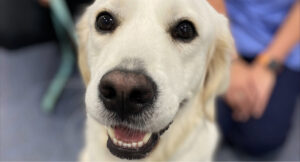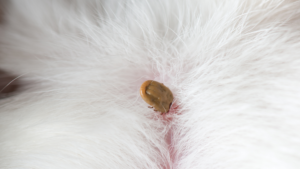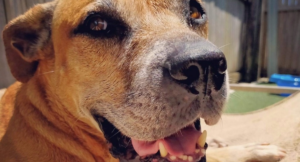What is grape and raisin toxicity?
The exact agent that causes toxicity is yet to be identified, but it has been noted that pets who ingest grapes, sultanas, raisins, and currents can develop gastrointestinal signs such as vomiting and or diarrhoea, in some cases they can rapidly deteriorate and develop acute kidney failure.
Who is affected?
Dogs and cats of any age and breed can be affected by grape or raisin toxicity and there is no specific breed that is more susceptible to grape and raisin toxicity. According to PetSure data during the 2020 calendar year, dogs and cats under three years of age had more incidences of raisin and grape toxicity than older pets. This may reflect the behaviour of young pets who can be more inquisitive and more likely to nibble on things they shouldn’t. Cats can also be affected by grape and raisin toxicity, however it tends to be much less frequent, probably because grapes and raisins aren’t as appealing to our feline friends as they are to pups!
According to PetSure normalised claims data, across the 2022 calendar year, the following breeds are most at risk of presenting for grape, rasin and sultana toxicities.
- Australian Cobblerdog
- French Bulldog
- Havanese
- Dachshund
- Beaglier
The average claimed cost for grape and raisin toxicity for dogs in 2022 is $734 and the highest claimed cost is $7,740
The average claimed cost for grape and raisin toxicity for cats in 2022 is $1,073 and the highest claimed cost is $3,205
Signs of grape and raisin toxicity
The initial signs of grape or raisin toxicity often relates to the gastrointestinal tract, and include vomiting and diarrhoea. These often occur within 6 to 12 hours of eating the offending item. Pets may appear generally out of sorts, or show signs of pain like bowing or whining. They may stop eating and become dehydrated. Serious signs can relate to kidney failure. Pets may start to shiver or tremor, urinate excessively or not at all or drink excessively. If you think your pet has eaten raisins, grapes or anything that they shouldn’t have, get in touch with your Vet.
Management of grape and raisin toxicity
Prevention is, by far better than cure! Ensure that any items containing grapes and raisins are out of your pet’s reach – remember that our pets have an awesome sense of smell and items wrapped up under the Christmas tree are not safe from pets. If your pet has eaten something containing grapes or raisins, seek out Veterinary attention immediately. The Vet may initially recommend inducing vomiting to help remove the offending items from your pet’s stomach. Hospitalisation is usually recommended so that the pet patient can have intravenous fluids to help flush the system of toxins and help prevent kidney damage. If the pet is already showing symptoms of toxicity, a longer period in hospital on fluids may be recommended as well as monitoring of the kidneys, urine output and gastrointestinal protectant medication. Kidney failure is sadly fatal, so if you have any doubt that your pet has consumed grapes or raisins, get in touch with your Vet as soon as possible.
How much does it cost to treat?
According to PetSure claims data from the 2022 calendar year, the average claimed cost relating to grape and raisin toxicity in dogs was $734, with the highest claimed cost being $7,7403.
Is grape and raisin toxicity covered by pet insurance?
Grape and raisin toxicity is generally covered by Comprehensive Accidental Injury and Illness pet insurance policies administered by PetSure (check our brand partners at petsure.gholab.com.au/partners), unless related to a pre-existing condition or exclusion. Refer to your policy documents and Product Disclosure Statement for more information.
References
RSPCA South Australia, 2018, 10 Human foods you definitely shouldn’t feed your dog (and what to give them instead) accessed 02/11/2021 at https://www.rspcasa.org.au/what-not-to-feed-dogs/
Gwaltney-Brant, S, 2021, Raisin and Grape Toxicosis in Dogs accessed 02/11/2021, available at https://www.msdvetmanual.com/toxicology/food-hazards/raisin-and-grape-toxicosis-in-dogs
Pet insurance can help by covering a portion of the eligible vet bill if the unexpected happens. Because it is difficult to predict the costs of veterinary care, it can help to have measures in place to help prepare for the unexpected. Check out our partner network and explore our policy tools to find a pet insurance policy.
Not all conditions or items are covered by Pet Insurance. Refer to the applicable Product Disclosure Statement for information about coverage and exclusions.








